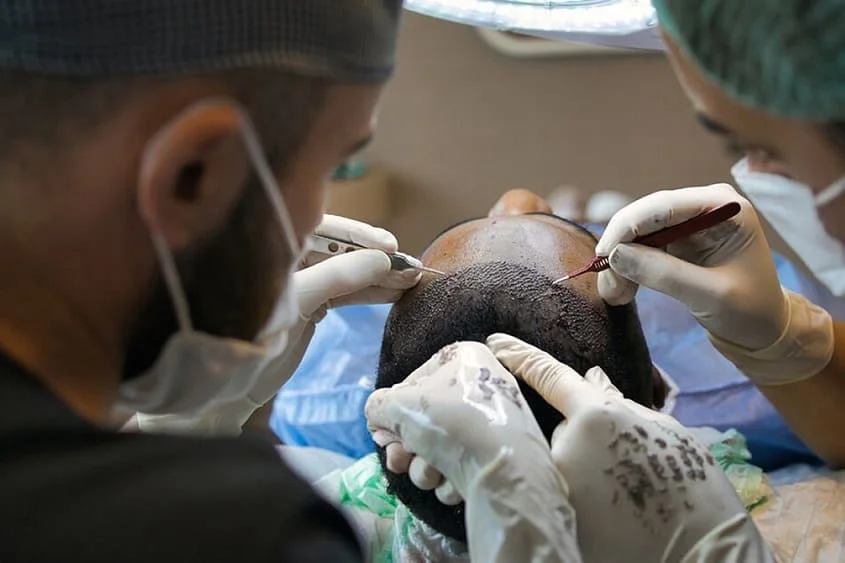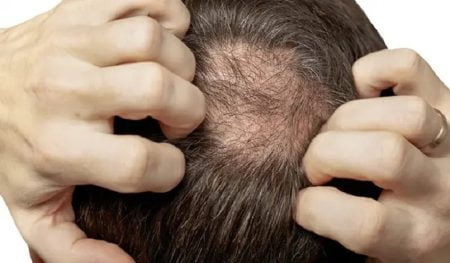Alopecia and Hair Transplant: An Effective Method to Cure Balding
- Updated on: Feb 11, 2025
- 3 min Read
- Published on Nov 24, 2023

Alopecia, a condition marked by hair loss, can significantly impact an individual’s self-esteem and overall well-being. Its various forms, from pattern baldness to more extensive hair loss, leave many seeking effective solutions. Enter the realm of hair transplantation, a medical procedure that has evolved significantly over the years, offering new hope to those affected.
This article delves into the world of hair transplants, examining how this advanced technique can not only restore hair but also bring back confidence. As we explore the intricacies of this method, we’ll understand why it’s becoming a sought-after solution for combating the challenges of balding, including for transgender individuals seeking alignment with their gender identity through procedures like transgender hair restoration. As we explore the intricacies of this method, we’ll understand why it’s becoming a sought-after solution for combating the challenges of balding.
Understanding Alopecia: Causes and Effects
Alopecia, a term that encompasses various forms of hair loss, can stem from multiple causes including genetics, hormonal imbalances, stress, and certain medical conditions. Its manifestation ranges from mild thinning to complete baldness, impacting individuals regardless of age or gender.
The effects of alopecia go beyond the physical, often leading to a significant emotional toll, affecting one’s self-image and social interactions. Given its diverse causes, effective treatment begins with a proper diagnosis from a healthcare professional. Understanding the underlying reasons is crucial in selecting the most appropriate and potentially successful treatment, paving the way for not only hair regrowth but also emotional healing.
Hair Transplant Procedures: A Modern Solution
Hair transplant has emerged as a modern and effective solution for combatting balding, particularly in cases of significant hair loss. This procedure involves transplanting hair follicles from denser areas of the scalp, or other body parts, to the balding regions. The two main hair transplant types are Follicular Unit Transplantation (FUT) and Follicular Unit Extraction (FUE).
FUT involves removing a strip of scalp with hair follicles and transplanting individual units, while FUE extracts and transplants individual hair follicles directly. Both methods offer substantial and long-lasting results, restoring not only hair but also confidence in one’s appearance.
Suitability and Preparation for Hair Transplant
Determining whether you’re a suitable candidate for a hair transplant is the first crucial step. Ideal candidates typically have sufficient donor hair with good density and a healthy scalp. Factors like the pattern and extent of hair loss, hair texture, and overall health also play a significant role. Once deemed suitable, preparation involves a thorough consultation with a specialist to discuss expectations and procedure options.
Pre-surgical steps may include specific hair care routines, avoiding certain medications, and stopping smoking to enhance recovery. Personalized guidance ensures patients are well-informed and ready for the journey toward hair restoration.
The Recovery Process and What to Expect
Recovery after a hair transplant is a crucial phase where patience plays a key role. Post-surgery, you can expect some scalp sensitivity, mild swelling, and soreness. It’s common for the transplanted hair to fall out initially—this is part of the natural process before new growth begins.
Complete healing can take a few weeks, with new hair growth typically starting after 3-4 months. It’s important to follow your surgeon’s aftercare instructions meticulously, which may include gentle washing routines and avoiding strenuous activities. Realistic expectations are key; full results can take up to a year to become evident.
Long-Term Results and Maintenance
The long-term success of a hair transplant largely depends on the quality of the donor’s hair and the skill of the surgeon. Most patients see significant and lasting results, with transplanted hair growing naturally. To maintain the health and appearance of your new hair, follow a healthy hair care regimen.
Regular gentle washing, using suitable hair care products, and protecting the scalp from sun exposure are essential practices. Regular check-ups with your surgeon can also help monitor progress and address any concerns. Remember, while a hair transplant offers a permanent solution, it doesn’t prevent future hair loss in untreated areas
Alternative Treatments for Alopecia
Besides hair transplants, there are several alternative treatments for alopecia, each with varying degrees of effectiveness. Medications like minoxidil and finasteride can slow hair loss and even stimulate regrowth in some cases. Non-surgical options include low-level laser therapy, which encourages hair growth through light stimulation.
Lifestyle changes, such as a balanced diet rich in hair-healthy nutrients and stress reduction, can also positively impact hair health. While these alternatives can be effective, particularly in the early stages of hair loss, they generally offer more temporary solutions compared to the long-term results achievable with hair transplants.
Recap
In conclusion, effective solutions for balding range from lifestyle adjustments to advanced medical procedures like hair transplants. Each journey is unique, and exploring these diverse options can pave the way to not only hair rejuvenation but also renewed self-assurance. Consult with professionals to discover the path that aligns best with your needs and goals, and take a confident step towards embracing a fuller, more vibrant self.












